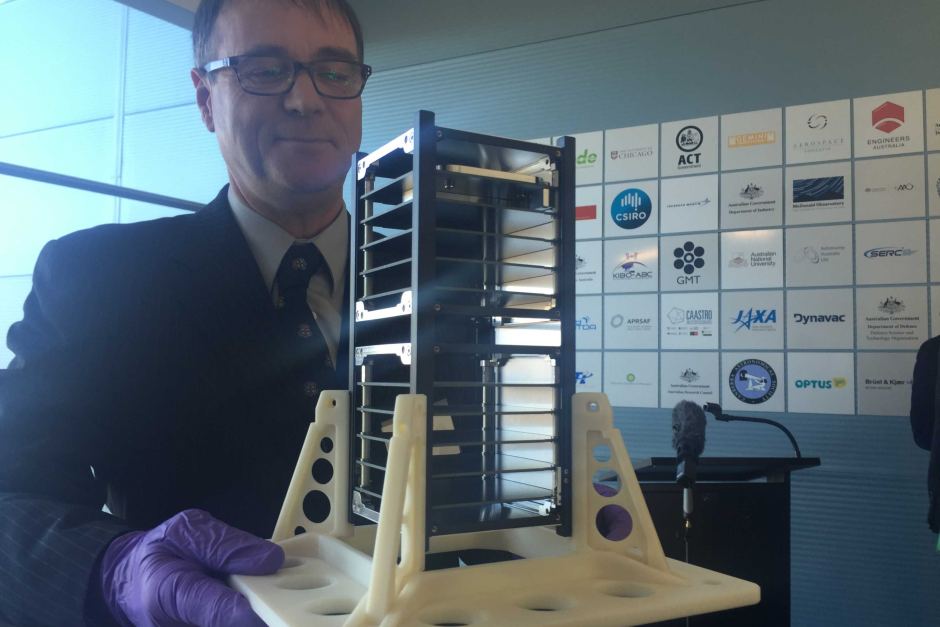Via ABC News, original post here. By Georgia Hitch. Posted

Testing has begun at the Australian National University’s (ANU) Mt Stromlo facilities on three mini-satellites to make sure they are ready to be part of an international space project later this year.
The ‘CubeSats’ measure 10 centimetres each side and are the product of collaboration between the University of Sydney, the Australian National University, the University of South Australia, University of Adelaide and the University of New South Wales.
The three satellites are part of a fleet of 50 that will all be launched into space as part of the European Union’s QB50 project.
Before they can be launched the CubeSats have to undergo rigorous testing to ensure they are “space qualified”.
“The testing will take place over the next day or week or so,” Director of the Research School of Astronomy and Astrophysics at the ANU Professor Matthew Colless said.
“We’ll be simulating here the conditions that the satellite will have to survive in orbit and also the terrible shaking they get as they go up, into orbit.
“By doing that … we know that they should be able to survive when they get launched up to the space station.”
Satellites will return ‘wealth of data’
Professor Colless said each of the 50 CubeSats were designed to feed back different information, from the success of the technology to the science of the atmosphere.
“These satellites will return a wealth of data to us on the technology, on the science, and it will give our people a great deal of experience in running missions like this,” he said.
“For example, studying the atmosphere is very important because … then we can better predict what the orbit of satellites are.
“That’s becoming more and more important as space gets more crowded and satellites need to know exactly where they are so they can avoid each other.”
Professor Colless also said the research could better help satellites avoid the near 170 million pieces of space junk.
“They’re [CubeSats] actually beginning to test out technologies that mean that in future fleets, constellations of these small satellites could be continuously monitoring the earth, taking images of the earth on a much more regular basis than satellites currently do now, so we can track changes on the earth in real time,” he said.
“This could be used to track the course of a bushfire as it evolves very rapidly because many little satellites are passing overhead, each taking a picture and downloading it to the fire brigades on Earth.
“There’s many applications of these small satellites that are being tested.”
Ultimately, Professor Colless said the hope was that CubeSats would be able to provide real-time information on natural disasters and other weather events.
